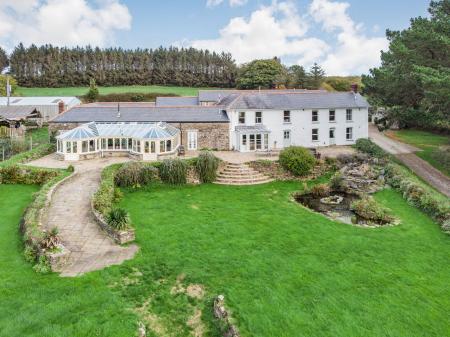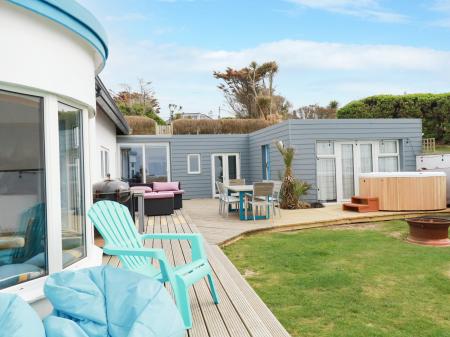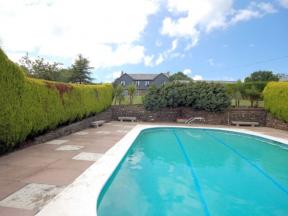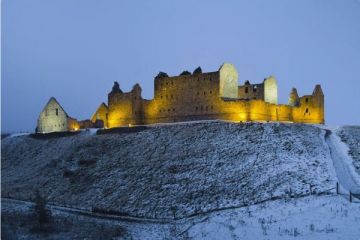Kent is known as the 'Garden of England', but the county is home to some of England's finest medieval castles. Here's our look at some of the best, from a moated house frequented by Henry VII to three castles begun by William the Conqueror shortly after his victory at the Battle of Hastings.
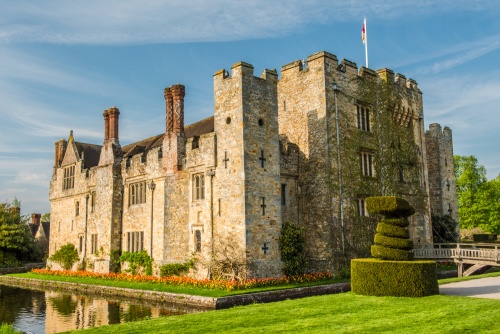
This fairytale moated castle near Edenbridge was begun in 1270 by William de Hever. In 1462 Geoffrey de Bullen (Boleyn) bought Hever and added wings on either side of the existing gatehouse.
It was here at Hever that the Boleyn family's most famous member grew up; Anne Boleyn, the second wife of Henry VIII was probably born at the Boleyn family home of Blickling Hall in Norfolk but she spent her childhood at Hever Castle, and it was here that Henry VIII came to court her. After Anne's execution for treason, Henry gave Hever Castle to his fourth wife, Anne of Cleves.
In 1903 the wealthy hotel owner William Waldorf Astor purchased Hever Castle. Astor restored the medieval buildings and laid out the superb Italiante gardens as well as the famous hedge maze.
Hever Castle can only be reached by a drawbridge across the moat, then by a passage under a heavy portcullis. The interior features a wonderful collection of Tudor furniture, tapestries, portraits. There are numerous items associated with Henry VIII and Anne Boleyn including a pair of illuminated Books of Hours annotated by Anne.

There was a royal Saxon manor on this riverside site near Maidstone, but the romantic castle we see today was begun by the Crevecoeur family after the Norman Conquest. The castle is set on a pair of islands in a large lake, reached by a fortified causeway.
Leeds Castle was owned by the Crown from 1278, and was used as a dower house by a succession of Queens of England including Eleanor of Castile and Margaret of France (both wives of Edward I), Isabella of France, Joan of Navarre, Anne of Bohemia, and Catherine of Valois.
Just because the queen formally owned Leeds Castle doesn't mean she was always afforded courtesy by the castle constable! In 1321 the constable refused to allow queen Isabella, the wife of Edward II, to enter 'her' castle. Edward had to send an army to besiege the castle and force the constable to surrender. The constable, not surprisingly, was executed for treason.
It wasn't only queens who visited Leeds Castle; Henry VIII stayed here several times, most notably in 1520 whilst the monarch was on his way to the Field of the Cloth of Gold meeting with Francis I of France.
In the 17th century the St Leger family built an elegant mansion on the largest island in Leeds Lake. In the following century the parkland surrounding the castle was laid out as a landscape garden. In the garden is a popular yew maze and within the maze is a secret underground grotto.

Dover Castle is known as 'the key to the kingdom', a testament to its vital strategic importance over the centuries. The castle was begun shortly after the Norman Conquest in 1066 but most of what we see today is the result of a major rebuilding project by Henry II in 1170.
In the early 13th century King John had a network of underground tunnels built, connected to sally ports for surprising an attacking enemy. The tunnels were later adapted for use as a military command post during WWII.
Dover Castle is not one building but a huge complex of buildings. At the centre of the site is the Great Tower, built by Maurice the Engineer, Henry II's master mason. English Heritage has painstakingly restored the Great Tower to recreate life in the original Norman castle, with authentic bedchambers, furniture, and decoration.
Facing the Great Tower is Arthur's Hall, the centre of castle life, built for Henry III around 1236.
At the highest point within the castle walls is the Saxon church of St Mary in Castro, begun around the year AD 1000. For centuries St Mary's has served as the garrison church. Beside the church is a Roman lighthouse dating to the early 2nd century AD. The lighthouse was raised in 1430 by Humphrey, Duke of Gloucester, to act as a bell tower for St Mary in Castro church.

When William the Conqueror defeated King Harold at the Battle of Hastings in 1066 one of his first acts was to build three castles along the south coast of his new kingdom. One of the three was at Rochester, at a crossing of the River Medway, on the site of a Roman fort.
The castle was destroyed in a rebellion by Bishop Odo of Bayeux in 1088, and rebuilt on a new site by Gundulf, the talented Bishop of Rochester. Gundulf built the high curtain wall but it was left to William de Corbeil, Archbishop of Canterbury, to build the central keep that is the castle's most impressive feature. The keep is the tallest in England at 113 feet.
In 1215 rebellious barons garrisoned Rochester Castle against King John. The rebels held out against a siege until food and water ran out. It was besieged again by Simon de Montfort in 1264. The Corporation of Rochester bought the castle in 1884 and turned the grounds into a public pleasure garden.
Aside from the superb 12th-century stone keep, the castle boasts long sections of bishop Gundulf's curtain wall, some of it following the line of the original Roman city walls.

One of the three castles built by William the Conqueror to reinforce his hold on his new kingdom was at Canterbury. The square stone keep we see today, however, was built by William's son, William II. Canterbury Castle took two decades to complete and was finished under Henry I in 1120. Henry's keep boasts extraordinarily thick walls, 13 feet across in places, and the building could only be entered by an external stair to the first floor.
Canterbury Castle was briefly captured in 1216 by Louis, the Dauphin of France. In 1277 the Jews of Canterbury were imprisoned here before being expelled from the realm by Edward I. In 1380 a mob stormed the castle as part of the Peasant's Revolt and forced the constable to release prisoners and burn legal documents. The castle declined in importance after Henry II built Dover Castle, and by 1730 it was being used as a courthouse. In the Victorian period it was used as a storage depot for coal.
Highlights include Roman tiles and bricks used in the walls. A short section of the Roman town wall of Canterbury is built into the south-west corner of the keep.

More artillery fort than castle, this fascinating Tudor fortress was built by Henry VIII in 1538 to counter the threat of a combined French and Spanish invasion. Deal was the largest 'Henrician' fort along the south coast, with 119 gun positions. Deal Castle was created in a cloverleaf shape to counter the threat of artillery fire.
The concentric design was the brainchild of Stefan von Haschenperg, who was tasked by Henry with designing a fortification able to withstand an attack by cannon the new 'super weapon' of the Tudor era. The result was an innovative concentric design, built low to the ground.
There are six semi-circular bastions within a ditch and curtain wall. Each level has its own firing platform, allowing cannons to fire simultaneously from the tower, the inner bastions, and the outer bastions.
Deal Castle was captured by Royalists during the Civil War, but apart from that it never saw military action. The castle is a very well-preserved example of a Tudor fort with a design that was, in its day, state-of-the-art.

This picturesque Elizabethan fortress was built in 1559 to protect the River Medway and the approaches to the Royal Dockyards at Chatham. It failed spectacularly in its main purpose when the Dutch fleet sailed up the Medway in 1667 and destroyed much of the British navy. The English sank many of their own ships just offshore from the castle to avoid them being captured by the Dutch.
Even before the Dutch attack, Upnor was captured by Royalist soldiers during the Civil War.
The failure of Upnor to halt the Dutch advance led to new batteries being built on the Medway and Upnor became little more than an ammunition storage depot
Highlights include a spiral stair inside the keep, with an ammunition hoist inside the stairwell. This is thought to be the earliest example of a cantilevered stair in England. In the castle courtyard are a pair of turkey oak trees grown from seeds brought to England from Crimea after the Crimean War.

Like nearby Deal Castle and the destroyed fort at Sandown, Walmer Castle is a Tudor artillery fort, built by Henry VIII to defend the south coast from invasion. While Deal remains a strictly military fortification, Walmer evolved over time to become a comfortable residence for the Lord Warden of the Cinque Ports.
Its most famous resident was the Duke of Wellington, who died at Walmer in 1862. You can see the chair where he spent his final days and the camp bed where he took his last breath. There is a fascinating exhibit of Wellington memorabilia, including an early pair of Wellington boots and the Duke's death mask.
Outside the castle is a colourful garden including a water garden dedicated to Queen Elizabeth, the Queen Mother, based around a long, rectangular canal.

After the Battle of Hastings in 1066 William the Conqueror entrusted a relative named Richard Fitzgilbert with the task of building a castle to defend an important crossing of the River Medway at Tonbridge. Fitzgilbert responded by erecting a traditional motte and bailey castle. Twenty years later the De Clares, a branch of the Fitzgilbert family, joined a rebellion against William's heir, William II. The king besieged Tonbridge and forced the garrison to surrender.
Another siege followed in 1215 - and again the castle garrison was forced to surrender. In 1264 the De Clares joined Simon de Montfort's rebellion again Henry III, who promptly besieged Tonbridge Castle and ... yes ... yet again the garrison was forced to surrender.
Gilbert de Clare later hosted Edward I and Eleanor of Aquitaine at Tonbridge Castle, bu the castle eventually passed to the Crown. The castle was 'slighted' during the Civil War so that it could no longer be used for military purposes. In 1791 Thomas Hooker built a mansion within the castle walls. This Georgian mansion now houses the local council offices.
The best-preserved castle feature is the gatehouse The cellar of the hall is now home to a museum of local heritage. There is a great hall on the second floor and stairs to the roof for wonderful views over the town. The Norman motte stands beside the gatehouse, and on top of the motte you can still see foundations of the medieval keep that once topped the mound.

This early Norman fortress was built in 1085. Unlike most early Norman castles which featured a tall mound, or motte, and a palisaded enclosure, or bailey, Eynsford Castle consists of a tall stone wall enclosing an open space with a cluster of buildings. There was no central keep, just a hall for accommodation and castle administration. The castle is reached by a drawbridge over a moat.
The Norman castle stands atop an earlier Saxon fortress. It was begun by William de Eynsford, the powerful Sherif of Kent. A century after William's time the castle was extended and a great hall and other domestic buildings were built inside the curtain wall. The walls were strengthened and raised, and a gatehouse added.
In 1261 the Eynsford estate was divided between the neighbouring Criol and Kirkeby families, and for the next 60 years the two families bickered over control of the castle. In 1312 the Kirkeby's sold Eynsford to Judge William Inge. The outraged Criol family declared that the Kirkbys had no right to sell 'their' castle so they led a band of men to ransack it. The castle seems to have been abandoned after the attack and never repaired.
It later passed to the Hart Dyke family, who also owned Lullingstone Castle. The Hart Dykes did not restore it; instead, they used Eynsford Castle as a stable and as kennels for their racing dogs.

One of the most beautiful and picturesque castles in England, Scotney was begun in 1377 after a raid by French warships caused widespread destruction along the south coast. Roger de Ashburnham, the Conservator of the Peace in Kent and Sussex, decided to build a fortress on the River Bewl to guard against the threat of further French invasions.
Ashburnham chose an island site surrounded by a wide moat. There he built a quadrangular castle with an outer courtyard, reached through a gatehouse. Only one of the original towers remains, and it is linked to a later Elizabethan manor house built amongst the castle ruins. Within the manor house is a secret chamber used by visiting Catholic priests during the late 16th century.
On a hilltop overlooking the castle stands Scotney House, built in 1830 by Edward Hussey in mock-Tudor style. Both the castle and Victorian mansion are surrounded by magnificent gardens, with the castle ruins acting as a romantic garden feature.
These are just a few of the historic castles that make Kent such an enjoyable county to explore. I'd be hard-pressed to pick a favourite, though I admit to a soft spot for Scotney, for its romantic beauty, and for Dover for the wealth of historical buildings to explore.
MOST POPULAR POSTS
